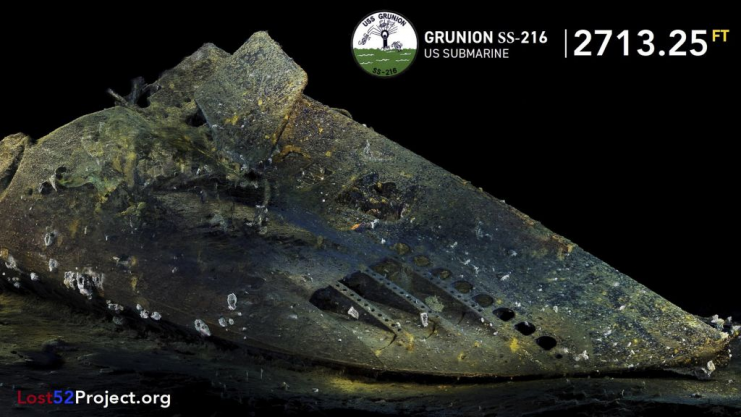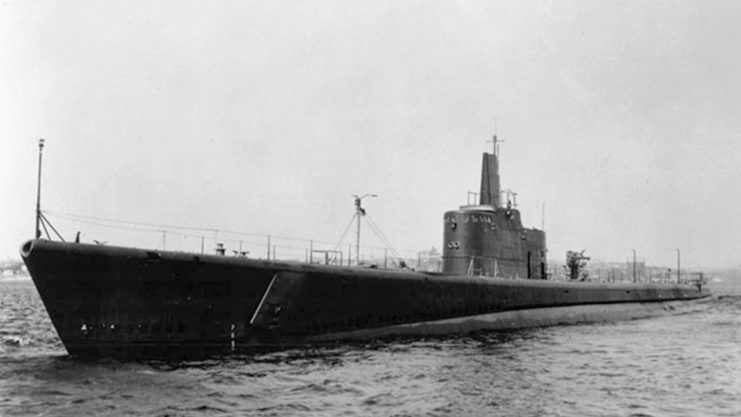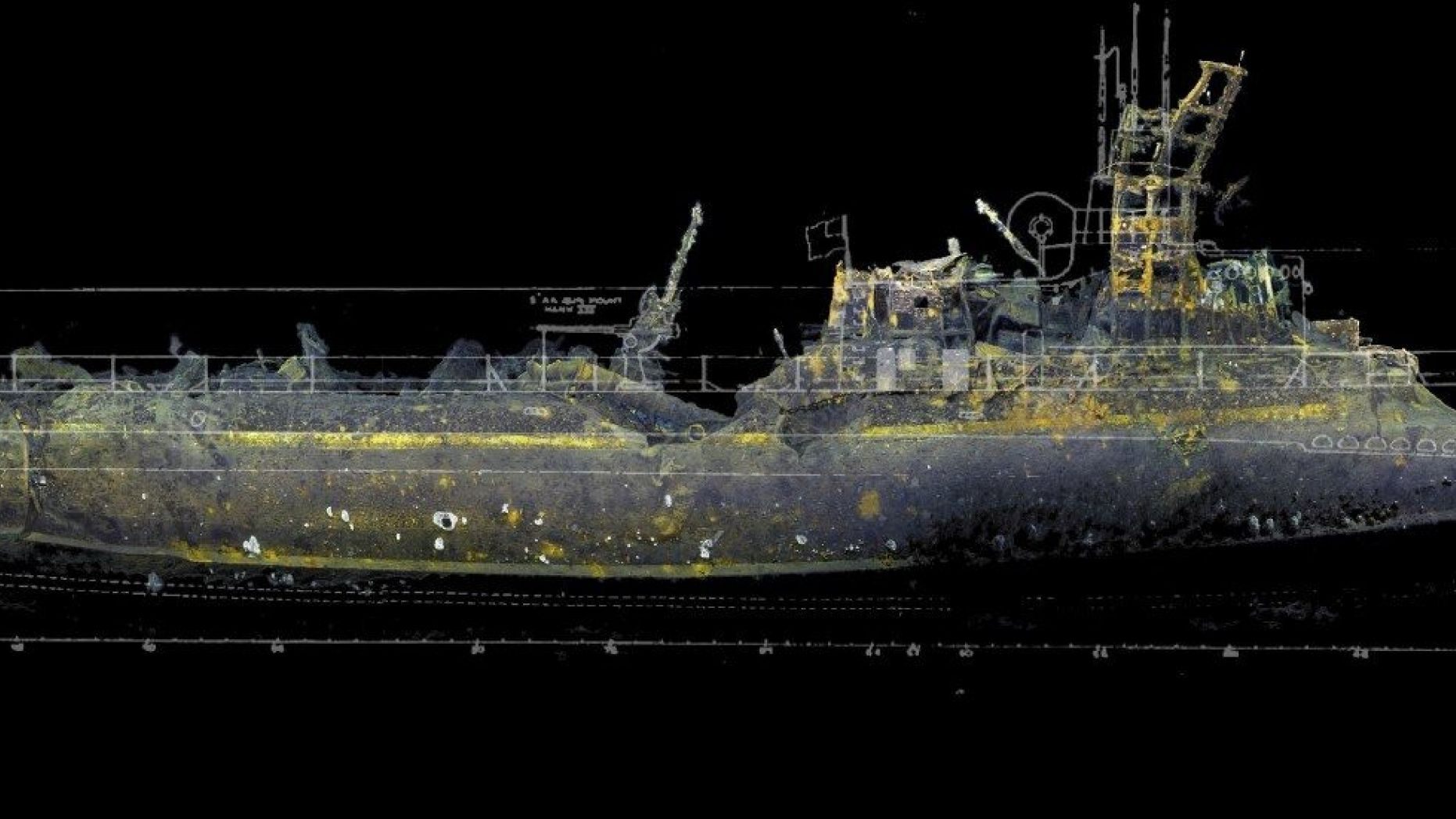The Lost 52 Project announced that it had located part the USS Grunion (SS 216), a US submarine that was lost during World War II.
The group found the bow of the Gato-class submarine off the coast of Alaska. The sub had been sent to the Aleutian Islands in June of 1942.
Prior to that assignment, the Grunion rescued sixteen sailors who survived the USAT Jack after it had been torpedoed by a German submarine while transferring from the Caribbean to Pearl Harbor.
On July 30, 1942, the crew of 70 sailors successfully sank two Japanese patrol boats off of Kiska during their very first war patrol. They were then ordered to return to their base on Amaknak Island. After reporting heavy enemy antisubmarine activity in their area, the ship was never heard from again.

The Grunion was declared assumed lost with all hands on October 5, 1942.
Nearly 80 years later, the bow was found in 2,713 feet of water by Kiska. Underwater drones and photogrammetry were used to find the wreckage. The team created 3D images of the bow underwater.
Lost 52 Project founder, Tim Taylor, described photogrammetry as being much more advanced than video or photography. He called it “the future of recording historical underwater discoveries.” These recordings allow historians and archaeologists to perform detailed research without having to dive into the ocean and without disturbing the wreck.
The Lost 52 Project has a goal of finding 52 submarines that went missing during WWII.
The main part of the Grunion was discovered in August of 2007. The sons of the Grunion’s captain, Mannert Abele, made the discovery that year but did not find the bow. In October of 2008, the US Navy confirmed that the wreckage was in fact from the Grunion.
This new discovery was made just a short ways away from the main wreck. The bow was resting on a volcanic slope on the floor of the sea.
Taylor, said that it was an honor to add to the discovery made by the Abele brothers.
Taylor’s day job is CEO of Tiburon Subsea which provided the underwater technology equipment. This makes the fourth WWII submarine discovery Taylor has been a part of.
The Lost 52 Project coordinates carefully with the Naval History and Heritage Command (NHHC). Robert Neyland is the head of the underwater archaeology branch of the NHHC. He said that the goal of the NHHC is to make sure that the memories of those who served the country as sailors “will always be remembered, honored and valued.”
From June 1942 to August 1943, the Japanese housed as many as 7,200 troops on Kiska and the Attu Atoll. The islands form a chain of volcanic islands that reaches 1,200 west from the Alaskan Peninsula. It was one of a few US territories that were occupied by enemy forces in the last 200 years.
In 1942 and 1943, the US fought a violent battle to retake the Aleutian Islands from Japan.
Last year, searchers found the stern of the destroyer USS Abner Read near Kiska. On August 18, 1943, the Abner was on patrol when a Japanese mine tore the stern off. Seventy-one souls were lost in the incident.

But the Abner did not sink. The crew patched the damaged section of the ship and two US destroyers towed the Abner back to port. Months later, the Abner was repaired and back on duty. A kamikaze attack finally sank the ship in November of 1944 during the Battle of Leyte Gulf.
Also discovered recently by a different group of researchers was the wreck of the last US Navy warship destroyed by a German submarine in WWII. A private dive team found the wreck of patrol boat USS Eagle PE-56 off the coast of Maine. This solved a 74-year old mystery about the location of that ship.
Another Article From Us: French Submarine Found After Going Missing Over 50 Years Ago
